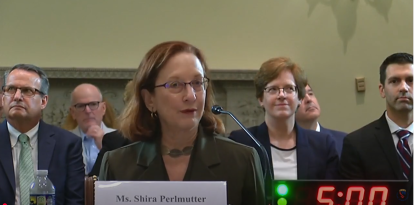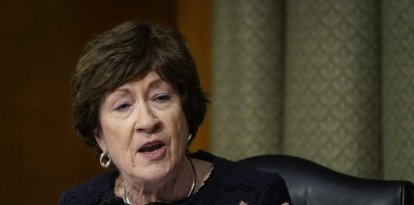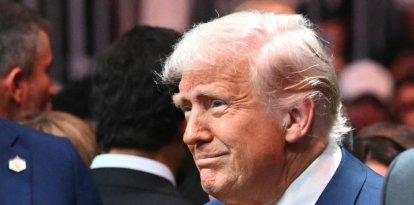From Nixon to Trump, here's how recent presidents who sought re-election fared
Joe Biden announces his bid for a second term in 2024. Of the last 10 presidents, five gained reelection, four were defeated and one decided not to run.

Joe Biden- Donald Trump- Barack Obama- George W. Bush/ Flickr-
Joe Biden will seek reelection. He made the news official through an announcement on April 25 with a video in which he called on voters to protect themselves from "MAGA Republicans" and to again support the Biden-Harris ticket. Looking back at the last ten presidents, five achieved a second term, four were defeated and one did not bother to run for reelection.
From first to last, the list includes Lyndon Johnson, Richard Nixon, Gerald Ford, Jimmy Carter, Ronald Reagan, George H.W. Bush, Bill Clinton, George W. Bush, Barack Obama and Donald Trump. Of course, we will have to wait until November 2024 to see how Biden fares on this list. At this point, only three presidents had been lower in popularity than the current president, with two of them being defeated in their quest for a second term.
Johnson wasn't interested in reelection
During the entire 20th century, only two presidents chose not to seek reelection: Calvin Coolidge and Lyndon Johnson. In 1964, the Democrat won the largest margin of victory in the popular vote since 1820 and has yet to be beaten by any candidate. Four years later, he was the favorite to win his party's nomination. However, his popularity began to wane as the Vietnam War progressed. After reflecting on it with his team and family, he surprised the nation on March 31, 1968.
"I will not seek, and will not accept, my party's nomination for another term as your President," Johnson declared to widespread surprise. The following day, his approval rating went from 35% to 49%. As the incumbent was already out of competition, Hubert Humphrey easily took the nomination, without even having won a single primary.
Nixon, Ford and Carter
After an improbable run for the presidency in 1968, Richard Nixon paraded comfortably on the day of his reelection. He captured 520 of a possible 538 electoral votes in one of the widest election margins in history. His rival, George McGovern, garnered only 17 electoral votes, those of Massachusetts and DC. Until 2023, it is the last race in which a candidate exceeded 60% in the popular vote.
The word reelection sounds strange to Gerald Ford, the only person to be president without having been elected to the Oval Office or vice president. He took office after the resignations of Nixon and Spiro Agnew (then vice president) in 1974. With the weight of Watergate and the Nixon pardon, Ford was carrying a heavy burden.
His good performance in the first debate against Jimmy Carter allowed him to close the gap in the polls, which had him far behind from the beginning. On election day, the media was surprised by how close the race ended up.
Ohio and Wisconsin gave the victory to the then-governor of Georgia, who sold himself as an outsider. The margins in these states were 0.27% and 1.68%, respectively, about 46,000 votes. If Ford had won there, added to the other 27 states in which he won, he would have achieved a full term as president. The final statistics showed 297 electoral votes for the Democrat compared to the Republican's 240, making Ford the first president to lose an election since Herbert Hoover in 1932.
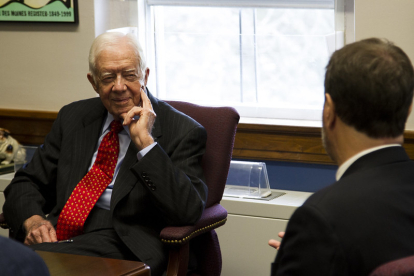
Reagan and Bush
Four years later, in 1980, Carter found himself in a difficult position, similar to Ford's in many ways. He had faced a stiff challenge in the primaries (in this case) and was in the midst of a delicate foreign policy situation (the Iran hostage crisis). However, Carter's downfall had yet another tense situation behind it: stagflation, which shook the country during his term of office and greatly reduced his popularity.
The combo was deadly. Ronald Reagan received the highest number of electoral votes ever for a challenger: 489, while the president scratched by with only 49. In the popular vote, the actor achieved a margin of 9.7%. Reagan ran against Walter Mondale in 1984 and the election went down in history. The Republican relied on economic recovery and hopeful rhetoric, translated into his mythical ad, "It's morning again in America."
Reagan carried 49 of the 50 states in that election, which translated into an electoral vote of 525 to 13. In the history of presidential elections, no candidate won more electoral votes than Ronald Reagan. In addition, until Trump and Biden's arrival, The Gipper was the oldest person (73) to be elected to office.
George H.W. Bush took advantage of the push from his former boss and comfortably won the 1988 elections. Four years later, things appeared a little more complicated. Although the economy had grown for 19 consecutive months, the perception of a slow recovery damaged the then-president's campaign, adding to the fact that voters had to choose between three candidates and the wear and tear of a party governing for three consecutive terms.
Ross Perot appeared as an alternative to the traditional parties and managed to gain 19% of the popular vote, hurting Bush's numbers in key states. Finally, Bill Clinton's charisma prevailed and broke with 12 years of Republican rule. Due to the competitiveness among the three candidates, the Democrat only obtained an absolute majority (half plus one of the votes) in his native Arkansas.
Clinton, Bush (again) and Obama
Perot upset the GOP again in 1996, although at that time, he captured only 8% of the vote. In this context, Clinton managed to defeat him along with Senator Bob Dole, the Republican nominee, becoming the first Democrat to win two consecutive presidential elections since Franklin Roosevelt. The incumbent received 379 electoral votes and 49.2% of the popular vote. It was also the last time a Democrat won Kentucky, West Virginia, Missouri, Tennessee, Louisiana or Arkansas, at least nationally.
By the year 2000, the Bush name returned to the presidential scene through George W. Bush, son of the former president. After winning the closest election in history, which was decided by 537 votes in Florida, he faced a tough re-election race. After enjoying a historic peak in popularity due to the response to the September 11 attacks, it was that same response that caused him to fall in the polls for 2004.
The War on Terror and the Iraq War weighed on the Republican, while the Democratic nominee, John Kerry was attacked for his shifting positions on several issues. This feature was the basis for one of the most viral ads of that election cycle. On election day, the then-president won with 286 electoral votes, against 251 for his rival. Ohio and Iowa were the swing states that decided the election in favor of Bush, who expanded his margin of victory from 2000. Moreover, this was the last time a Republican prevailed in the popular vote.
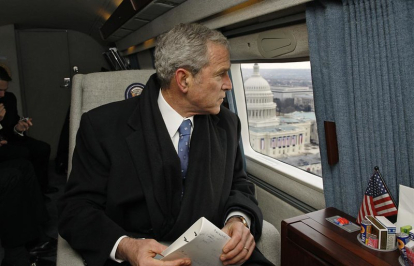
Barack Obama became the first African-American to become president of the United States in 2008. Because of his lackluster economic performance, Republicans were eagerly looking forward to the 2012 election. Mitt Romney managed to outperform John McCain to clinch the Republican nomination and while he was able to take back North Carolina and Indiana, it wasn't enough to defeat the president's smiling, buying smile.
Of the nine key states, Obama won eight, winning 332 electoral votes to the Republican's 206. He then became the first president to win reelection with fewer electoral votes and less difference in the popular vote, compared to his first election. Interestingly enough, the four men who participated on both sides all achieved important positions after the race. Biden, then Vice President, made it to the Oval Office in 2020, Paul Ryan, then Vice Presidential candidate for Romney, was later Speaker of the House, while Romney himself made it to the Senate in 2018.
Donald Trump
The tycoon is the latest president on the roster to fail to win a second term. 2020 was an atypical year electorally speaking, since the Coronavirus pandemic impacted all elections, from municipal to national, becoming the central theme. On Election Day, Trump failed to hold three key states from his improbable 2016 victory: Michigan, Wisconsin and Pennsylvania, adding to his narrow defeats in Georgia and Arizona.
At the end of the day, 74,000 votes out of 155 million cast separated him from a successful reelection. This figure breaks down in Nevada, Wisconsin, Georgia and Arizona, states he lost by 33,000, 20,000, 11,000, and 10,000 votes, respectively.
Joe Biden won with 306 electoral votes to his rival's 232, returning the Democrats to the White House. The comeback speech managed to turn the balance in his favor and he became the oldest president to take office. Mail-in ballots allowed him to become the president with the most votes in U.S. history, 81 million, followed by Trump's 74 million that year (although he lost) and Obama, with 69.5 million.
In review, 50% of recent presidents have been successfully reelected. Joe Biden hopes to increase that percentage in 2024, a year in which he could face Trump again, although Ron DeSantis, who has not yet confirmed his candidacy, is still on the fence for the Republican nomination.
RECOMMENDATION

